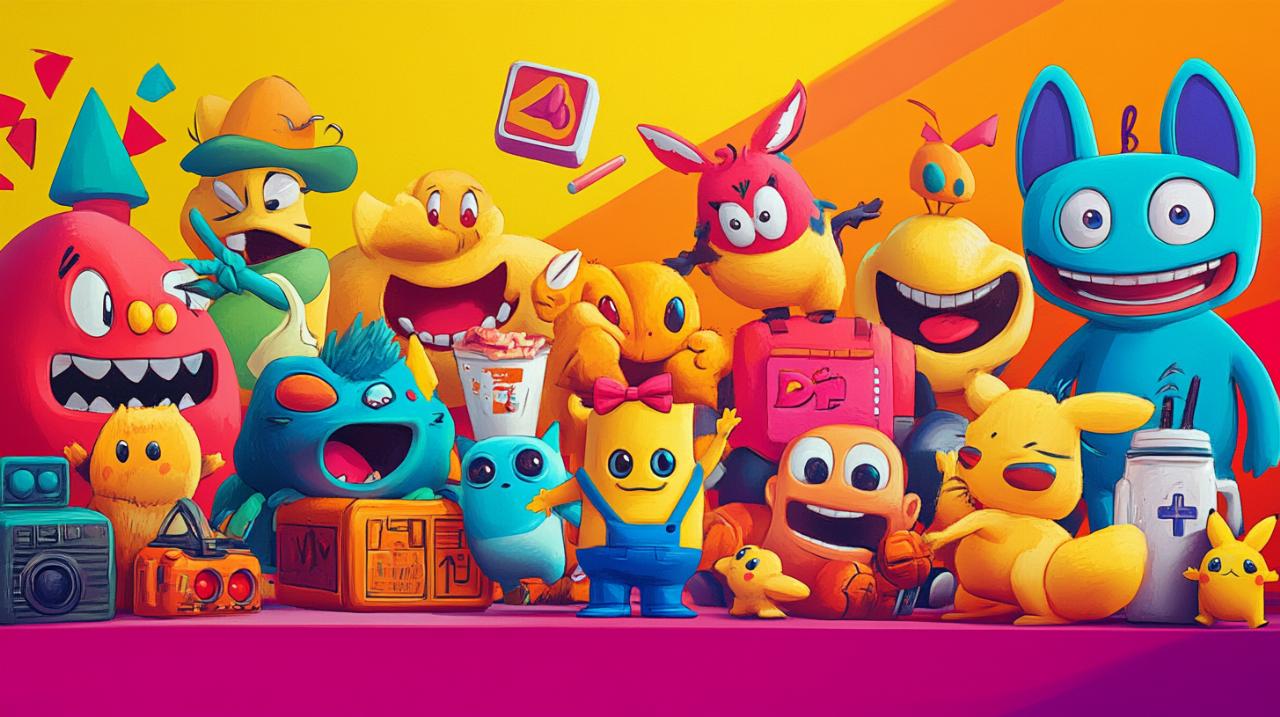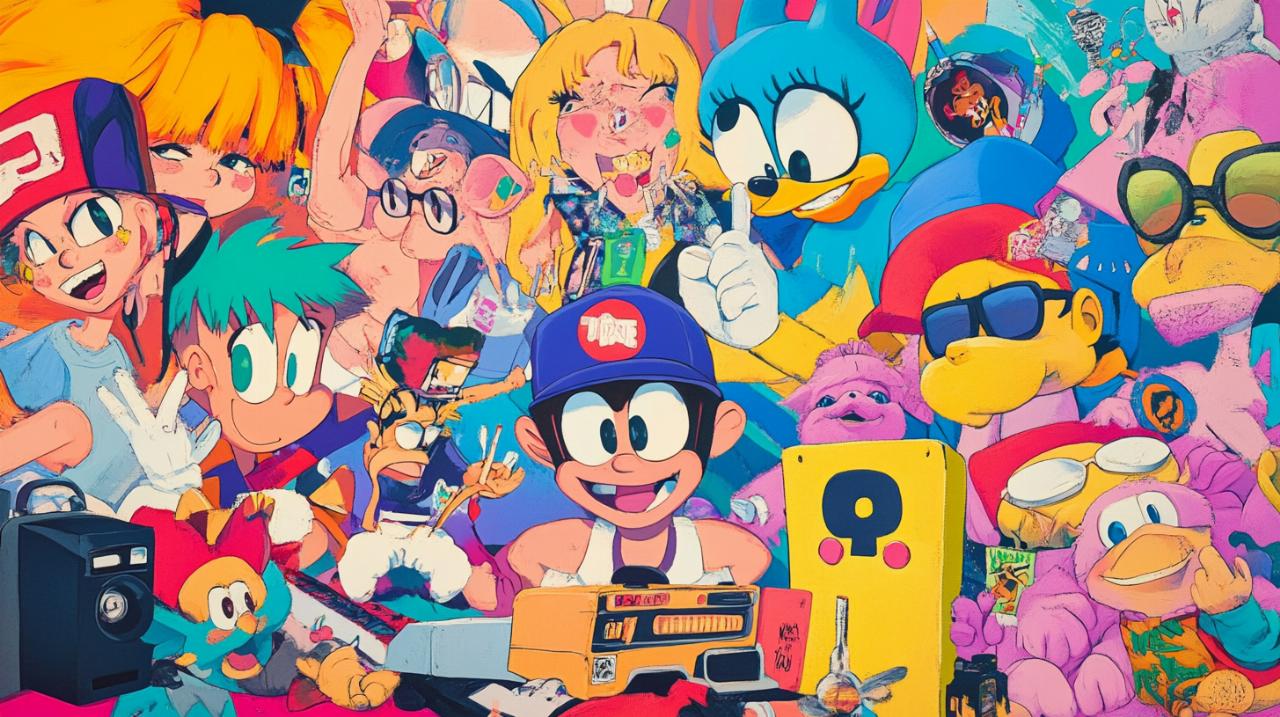The telly screens of the 1990s flickered with a brilliance that captivated an entire generation, drawing children from their beds on Saturday mornings and keeping them glued to the sofa after school. It was a decade when animation transformed from simple entertainment into a vibrant cultural phenomenon, one that would leave an indelible mark on the hearts and minds of those who grew up during this remarkable period. The characters that danced across those screens were more than mere drawings; they were companions, teachers, and sources of endless wonder that shaped the way a generation viewed the world around them.
The cultural legacy of 90s animation
The 1990s represented a golden era for animated television, a time when technological advances and shifts in production approaches led broadcasters to invest heavily in original content featuring complex narratives and richly developed personalities. Digital tools emerged that allowed creators to craft elaborate worlds and push the boundaries of character design in ways previously unimaginable. What resulted was a revolution in storytelling that elevated cartoons from simple children's fare to sophisticated entertainment that could engage viewers of all ages. The decade witnessed channels such as Nickelodeon, Cartoon Network, and Fox Kids establishing themselves as cultural hubs, each building distinctive brand identities that fostered remarkable viewer loyalty. These networks became synonymous with quality animation, and their programming blocks became appointment viewing for millions.
The nostalgic 90s cartoon characters memories that linger today are testament to the profound impact these shows had on shaping childhood experiences and cultural touchstones. Characters like Goku from Dragon Ball Z, the irresistibly adorable Pikachu from Pokemon, and even crossover icons from earlier decades became emblematic of universal values that transcended their animated origins. They represented courage, friendship, perseverance, and the triumph of good over adversity. These weren't just entertaining figures; they embodied ideals that resonated deeply with young viewers navigating their own challenges. The decade also saw an extraordinary diversity of character types, allowing audiences to find representations they could genuinely identify with, whether in the adventurous babies of Rugrats, the mystery-solving antics of Scooby-Doo, or the relentless chase between Tom and Jerry that had entertained generations before.
Saturday morning rituals and childhood routines
Saturday mornings during the nineties held a special magic that defined childhood routines across the country. Children would wake early, often before their parents, racing to claim the best spot in front of the television with a bowl of sugary cereal in hand. This weekly ritual became a cherished tradition, a moment when the responsibilities of school and homework melted away, replaced by hours of uninterrupted animated adventures. The programming blocks were carefully curated to keep young viewers engaged, transitioning seamlessly from one show to the next, creating a sense of anticipation and excitement that built throughout the morning. These weren't passive viewing experiences; they were events that children discussed in playgrounds on Monday mornings, comparing favourite episodes and debating which characters were the coolest.
The shows themselves became markers of time and memory, with certain series evoking specific periods of childhood. Teenage Mutant Ninja Turtles brought pizza-loving, ninjutsu-practicing reptiles into living rooms, teaching kids about teamwork while delivering action-packed entertainment. Rugrats offered a unique perspective by presenting adventures through the eyes of babies, allowing children to see the world from a different vantage point and appreciate the wonder in everyday experiences. Dennis the Menace showcased the mischievous spirit that many children recognised in themselves, celebrating the playful chaos of youth. These programmes created shared cultural experiences that bound a generation together, establishing common references and inside jokes that persist decades later.
How 90s cartoons influenced pop culture and fashion trends
The influence of nineties animation extended far beyond the television screen, permeating fashion, language, and broader popular culture in ways that continue to resonate today. Character merchandise became ubiquitous, with lunchboxes, backpacks, clothing, and toys bearing the likenesses of beloved animated heroes flooding shops and becoming must-have items for children. Catchphrases from shows entered everyday vocabulary, and fashion trends were directly inspired by what characters wore on screen. The brightly coloured, often oversized clothing favoured by cartoon protagonists found its way into children's wardrobes, as did themed accessories and footwear. This wasn't merely commercial exploitation; it represented a genuine desire among young fans to embody the qualities and styles of their animated idols.
The cultural impact deepened as these shows introduced audiences to diverse storytelling traditions and artistic styles. Dragon Ball Z brought Japanese anime aesthetics to Western audiences, opening doors for a wave of international animation that would reshape the landscape of children's television. The Powerpuff Girls offered bold, graphic designs and girl-power narratives that challenged traditional gender roles in animation. Dexter's Laboratory celebrated scientific curiosity and intellectual pursuits through its boy-genius protagonist. Meanwhile, Batman: The Animated Series introduced a darker, more sophisticated tone that proved animation could tackle complex themes and atmospheric storytelling, influencing not only cartoons but also live-action superhero productions for years to come. Even South Park, with its irreverent humour and willingness to challenge social norms, demonstrated that animation could serve as a platform for satirical commentary, expanding the medium's potential audience and thematic scope.
Beloved characters that defined our youth

The characters themselves became cultural icons, representing far more than their individual shows. They were symbols of childhood itself, embodying the imagination, resilience, and boundless optimism that defined youth. Whether it was the gentle life lessons woven into the adventures of a young bear named Kissyfur navigating life in Louisiana alongside his father, or the mystery-solving escapades of Scooby-Doo and his human companions, each character brought something unique to the cultural landscape. The enduring appeal of these figures lies in their ability to connect with fundamental human experiences and emotions, presenting them through the accessible and engaging medium of animation. Their adventures, challenges, and triumphs mirrored the experiences of their young viewers, offering both escapism and reflection.
The genius of nineties animation lay in its ability to balance entertainment with substance. Shows were crafted to captivate attention while subtly imparting important messages and values. The diversity of programming meant there was genuinely something for everyone, whether children were drawn to action-packed adventures like X-Men and Spider-Man, the surreal and often unsettling humour of Courage the Cowardly Dog, or the imaginative scenarios of Dexter's Laboratory. This variety ensured that the decade's animation legacy would be multifaceted, touching different aspects of childhood development and appealing to varied temperaments and interests. The characters became friends, role models, and sources of comfort, their presence in daily life providing stability and continuity during the formative years of growing up.
The educational messages hidden in our favourite shows
Beneath the entertainment value of nineties cartoons lay carefully crafted educational content that enriched young minds without feeling didactic or preachy. Many programmes embedded lessons about problem-solving, critical thinking, and social skills within their narratives, making learning feel like a natural part of the viewing experience rather than an imposed obligation. Pokemon, for instance, taught lessons about perseverance, friendship, and the importance of training and preparation to achieve goals. The show's protagonist, Ash Ketchum, demonstrated resilience in the face of setbacks and the value of treating others with respect and kindness. Similarly, Rugrats explored themes of imagination, cooperation, and understanding different perspectives, all through the innocent lens of toddler adventures.
Other shows took more direct approaches to education whilst maintaining their entertainment appeal. The emphasis on honesty, empathy, and courage appeared consistently across programming, with characters regularly facing moral dilemmas that required them to choose between easy options and doing what was right. These narrative choices provided frameworks for young viewers to understand complex ethical concepts in age-appropriate contexts. The shows demonstrated consequences of actions, the importance of apologising and making amends, and the value of standing up for others. By presenting these lessons through engaging stories and relatable characters, nineties animation succeeded in shaping moral development whilst keeping audiences thoroughly entertained, a balance that modern programming continues to strive for.
Character values and life lessons that stuck with us
The values embodied by nineties cartoon characters have proven remarkably durable, with many adults today citing these shows as formative influences on their personal development. The courage displayed by heroes facing seemingly insurmountable odds taught children that bravery wasn't the absence of fear but the willingness to act despite it. The loyalty demonstrated by friendship groups, whether the Teenage Mutant Ninja Turtles supporting each other through battles or the Rugrats sticking together through their misadventures, reinforced the importance of relationships and mutual support. These weren't abstract concepts presented in lectures; they were lived experiences of characters children cared deeply about, making the lessons personal and memorable.
The continuing influence of these shows manifests in multiple ways across contemporary culture. Streaming platforms have made the entire catalogue of nineties animation accessible to both original fans seeking nostalgic comfort and new audiences discovering these classics for the first time. This accessibility has sparked renewed interest, leading to reboots, reimaginings, and a thriving market for merchandise and collectibles. Parents who grew up watching these programmes are now introducing them to their own children, creating intergenerational viewing experiences that strengthen family bonds and facilitate shared cultural touchstones. The references to these shows appear constantly in memes, social media content, and contemporary entertainment, demonstrating their lasting relevance. The characters that once defined childhood for one generation now serve as bridges between ages, proving that truly resonant storytelling transcends temporal boundaries and continues to offer value regardless of when it was created.
